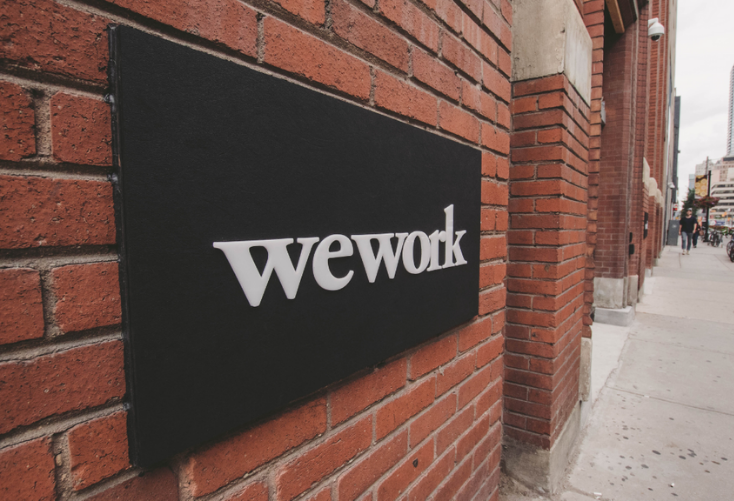Hand selected flexible workspace news from the most reliable sources to keep you ahead of the pack. We find all the latest news, so you don’t have to. Morning and afternoon updates. Stay in the know.
Here’s what you need to know today:
- Flexibility Transcends Beyond The Workplace NEW
- Adam Neumann Has Not Received His Total Exit Package Fee NEW
- Adjusting To The New Needs Of Coworking Members NEW
- More Flexibility Will Be Necessary For Coworking Firms
- Companies Are Still Apprehensive About Remote Working
- Maintaining A Healthy Workforce Throughout The Uncertainty
Flexibility Transcends Beyond The Workplace
Although the future of education and the workforce is still uncertain, one thing that is undeniable fact is that the world will be a much more flexible place.
According to the Future of Careers, the World Economic Forum, one of the major drivers of the transformation in global business is the adoption of flexible offices and modern technologies that enable collaboration.
This includes the ability to teleconference, telecommute and the use of coworking spaces to meet the varying work needs of employees.
With the workplace evolving at a steady pace, schools should follow suit in order to support students who want to collaborate while virtually learning.
So how can institutions create flexible classrooms that nurture the needs of students? Much like businesses operating remotely, transitioning to remote learning allows students to have a bigger say in how they study. This leads to higher engagement and a better understanding of their subject.
Additionally, teachers have the ability to have more flexibility when aiding their students with work. This open line of communication instantly makes for a better learning experience, thus allowing them to grasp concepts better.
As companies are quickly learning that the employee experience is key to a successful workplace, the same can be applied to the student experience.

Adam Neumann Has Not Received His Total Exit Package Fee
WeWork and SoftBank reportedly only paid Adam Neumann, the former CEO of WeWork, a portion of the $185 million fee that was part of his exit package from the coworking firm.
The payment was part of a noncompete agreement for Neumann. The source who revealed this said a portion of payment was dependent upon the completion to acquire WeWork stock from Neuman, as well as other shareholders. However, SoftBank walked away from this tender offer, which led to a lawsuit from both WeWork and Neumann.
The state of Neumann’s exit package came into question after Marcelo Claure, chief executive of WeWork, was asked about it at a Wall Street Journal technology conference in which he said the arrangement was void and did not elaborate.
The $185 million fee as part of SoftBank’s bailout for the coworking firm after Neumann was forced to step down as CEO of WeWork, which included selling $1 billion in stock and a $500 million loan.

Adjusting To The New Needs Of Coworking Members
Coworking and flexible office operators are just one of many industries within the commercial real estate market to take a massive hit due to the pandemic.
Now, these companies are seeking new ways to change their business models to become more sustainable as the world continues to adjust to the new way of living and working.
“The next six to 18 months are going to be difficult,” said Lisa Skye Hain, CEO of Primary. “But large and small companies are going to want the flexible terms that the coworking and flex office industry affords them. That’s the No. 1 reason we’re going to do great in this industry in the long run.”
Skye Hain was one of WeWork’s first employees, and went on to start her coworking firm Primary. However, it was forced to close its two locations in Manhattan during the midst of the COVID-19 outbreak.
It isn’t just the smaller operators who have suffered. WeWork itself has laid off thousands of employees and closed multiple locations since the beginning of the pandemic.
Similarly, New York-based firm Knotel has laid off almost half of its staffers and has now been accused of missing rent at some of its spaces.
Skye Hain said recent deals at Primary have mostly been for one or two-person spaces for those looking to work in a safe environment, and she expects that trend to continue moving forward.
Of course, this is contingent upon a vaccine being available and larger companies feel confident to bring their employees back to physical workspaces.

More Flexibility Will Be Necessary For Coworking Firms
As many coworking firms continue to see a dip in business due to the pandemic, operators are looking to adjust their business model to be as flexible as possible.
“We’re seeing the parents who have kids at home, the people who need a place to get out, but you can’t get out of the house or do not want to get out of the house every day,” said Jamie Russo, executive director at Global Workspace Association. “The I-do-not-want-a-30-day-commitment customer. ‘I only want to pay for what I use.’”
In a Coworking Insights survey of over 600 coworking firms and users found that 71% of respondents saw a drop in space usage, which led to a 40% drop in membership and contract renewals.
However, despite the countless challenges that the industry has seemingly faced over the last year or so, operators remain confident that coworking will come back stronger than ever.
In fact, the same survey found that over 71% of remote workers said they had plans to return to a coworking space.
But the concept of absolute flexibility is a must moving forward, and the transition is being seen in operators large and small. WeWork recently started offering on-demand rental for non-members, while Industrious launched its Oasis program over the summer to allow members to come into the space two or three days a week for a reduced fee.
“COVID kind of accelerated the underlying demand factors in the first place. If there’s ever a time to experiment with this, now is the time,” said Jamie Hodari, CEO of Industrious.

Companies Are Still Apprehensive About Remote Working
Although many major companies like Facebook and Twitter have committed to offering remote working options permanently, some organizations are still apprehensive about fully adopting this work arrangement.
While it could be assumed that this is due to leaders thinking working from home hinders productivity, it is more nuanced than that.
Firstly, there are many real estate costs to keep in mind when going remote. For instance, Pinterest recently paid $90 million to exit a San Francisco lease agreement.
Leases are typically long-term, and walking away from them can often be costly as seen in Pinterest’s situation. While large, established companies may be able to hand over millions to exit a lease, this is not the case for most.
However, companies who are keeping most of their real estate are still making adjustments to their operations. For example, Microsoft recently announced a new hybrid program that allows employees the choice to work from home or in the office.
Additionally, leaders have expressed issues about maintaining workplace culture in a virtual setting. Unfortunately, socializing online does not properly replicate in-person interactions.
These connections are highly valuable to many workers as they help employees feel part of a community, which leads them to be satisfied and ultimately more productive.
However, despite these factors causing companies to rethink their operational strategies in the future, remote working has many upsides that could outweigh the cons.

Maintaining A Healthy Workforce Throughout The Uncertainty
Organizations are scrambling to find the ideal solution to their current work arrangements, particularly as some workers struggle to adapt to the new normal.
Serviced office company Servcorp has revealed a guide that can help companies mitigate the risk of the ongoing pandemic.
One of the more important aspects of a productive workplace during these times is ensuring that employees are safe and healthy. Building out the workplace that emphasizes physical and mental health, as well as implementing collaborative opportunities for remote workers will be key moving forward.
Additionally, leaders need to reflect on how the lockdown and transition to working from home impacted their organization. What did and didn’t work? How can HR and business leaders ensure that employees are supported while focusing on the company’s bottom line?
Flexibility will also be vital for companies looking to support their employees as much as possible. This means allowing workers to work from home if needed, as well as providing them access to tools and even a workspace that can aid in their work needs.
Finding ways to support workplace culture virtually is difficult, but if employers lead with clear and supportive messaging, employees will continue feeling connected with the colleagues and the company itself.
Additionally, training workers with the tools needed for adapting to the future of work. This means reskilling and upskilling workers so they can work alongside modern technologies.



 Dr. Gleb Tsipursky – The Office Whisperer
Dr. Gleb Tsipursky – The Office Whisperer Nirit Cohen – WorkFutures
Nirit Cohen – WorkFutures Angela Howard – Culture Expert
Angela Howard – Culture Expert Drew Jones – Design & Innovation
Drew Jones – Design & Innovation Jonathan Price – CRE & Flex Expert
Jonathan Price – CRE & Flex Expert














